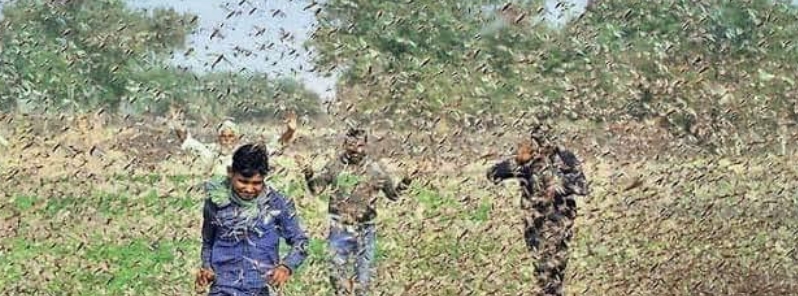India under worst locust attack in nearly 30 years

Massive swarms of locusts are wreaking havoc across western and central India, already destroying almost 50 000 ha (124 000 acres) of cropland. The outbreak has affected Rajasthan and Madhya Pradesh and has also begun impacting Uttar Pradesh's Jhansi district on Wednesday, May 27, 2020, amid what is described as the worst attack in nearly three decades.
The plague prompted authorities to level up their response– drones, tractors, and cars have been deployed to track the insects and spray them with pesticides. Currently, the Locust Warning Organization (LWO) has 50 teams tracking swarms from Rajasthan to Madhya Pradesh.
"Eight to 10 swarms, each measuring around a square km (0.39 square miles) are active in parts of Rajasthan and Madhya Pradesh," said KL Gurjar, LWO deputy director.
Nearly 50 000 ha (124 000 acres) of cropland has already been destroyed. On the other hand, pests have been controlled in about 47 000 ha (116 000 acres) so far in Rajasthan, Gujarat, and Madhya Pradesh.
"Before the monsoon, we will control them completely so that there is no second wave," said Gurjar.



Smaller swarms are also active in some states across India, including Vidarbha and other parts of Maharashtra, as well as portions of Uttar Pradesh. "They are headed towards Morena for now," Gurjar added.
Seasonal crops in both states have been severely damaged, leaving farmers devastated. Prior to entering Rajasthan, the swarms destroyed harvests in the neighboring country of Pakistan in April.
The warning center noted that India has not experienced locust swarms on this scale since 1993.
Desert #Locust (टिड्डी दल) arrived in India . They can eat a tree in seconds and crops for around 35 million people in a day. Last year they ate 40% of Pakistan's crop.
These species have found favourable conditions in India due to climate change after 27 years. #Iocustattack pic.twitter.com/Etsqqld2MO— Dr Syed Faizan Ahmad (@drsfaizanahmad) May 27, 2020
Locust attack :
pl burn dried chilly plant, it produces a toxic smell which makes locust to run away. If dried chilly plant not available pl burn chilly powder with grass and pour some oil , it also makes locust to run away.This is the traditional method followed in rural India pic.twitter.com/aswvH6OqfY— Balakrishnan Kannan (@swarajbala) May 27, 2020
LOCUST SWARMS ATTACK in India….
Another emerging threat to already existing food famine in the nation….#LocustAttack
2020 what's more to see pic.twitter.com/lrDBmRghoB— Rahul Meena (@SRahulM) May 25, 2020
Featured image credit: Balakrishnan Kannan/Twitter

Commenting rules and guidelines
We value the thoughts and opinions of our readers and welcome healthy discussions on our website. In order to maintain a respectful and positive community, we ask that all commenters follow these rules.